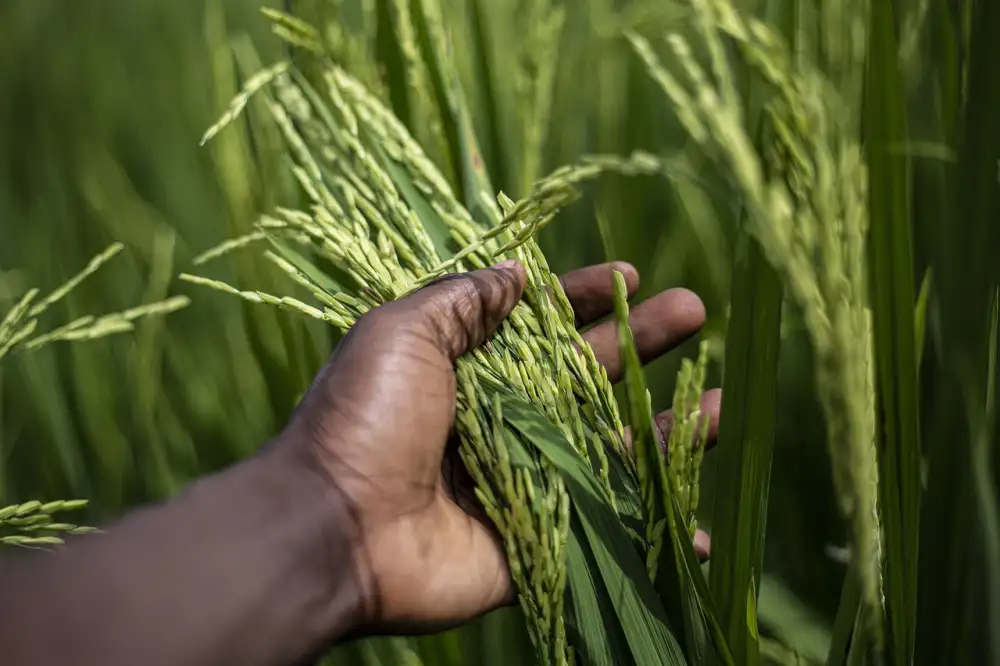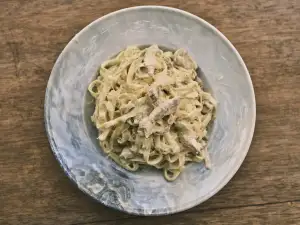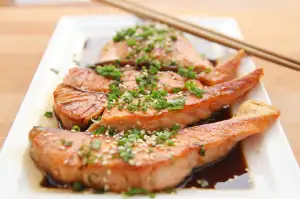Deliciously Authentic: Explore the Best Spanish Rice Recipes for a Taste of Spain

- History and Origins of Spanish Rice
- Key Ingredients Used in Spanish Rice
- Traditional Cooking Methods for Spanish Rice
- Variations and Regional Adaptations of Spanish Rice
- Health Benefits of Spanish Rice
- Step-by-Step Recipe for Authentic Spanish Rice
- Tips and Tricks for Perfecting Spanish Rice
- Serving Suggestions and Pairings for Spanish Rice
Spanish rice, also known as "arroz" in Spanish, is a staple dish in Spanish cuisine. With its vibrant colors and rich flavors, it is a delicious representation of the diverse culinary heritage of Spain. This flavorful dish has gained popularity worldwide for its versatility and ability to be enjoyed as a main course or a side dish. Whether you prefer it spicy or mild, vegetarian or meaty, there is a Spanish rice recipe to suit every palate. Join us on a culinary journey as we explore the best Spanish rice recipes and uncover the secrets behind this beloved dish.
History and Origins of Spanish Rice
The history and origins of Spanish rice can be traced back to the Moors, who introduced rice cultivation to Spain during their rule in the 8th century. Rice quickly became a staple in Spanish cuisine, especially in the regions of Valencia and Andalusia. The Moors also brought with them spices such as saffron, which added vibrant color and flavor to the rice dishes. Over time, Spanish rice evolved through influences from other cultures, including the Romans and Arabs. Today, it is considered a quintessential dish in Spanish cuisine and is enjoyed both domestically and internationally.
Key Ingredients Used in Spanish Rice
Spanish rice, also known as "arroz a la española," is a flavorful dish that showcases the rich culinary heritage of Spain. The key ingredients used in Spanish rice are rice, tomatoes, onions, garlic, and various spices.
Rice is the main component of this dish and is typically short-grain rice such as Bomba or Calasparra rice. These varieties have a unique ability to absorb flavors while maintaining their shape and texture.
Tomatoes add a vibrant color and tangy taste to Spanish rice. They can be used fresh or in the form of tomato paste or sauce. Onions and garlic provide depth and aroma to the dish, enhancing its overall flavor profile.
A medley of spices like paprika, saffron, cumin, and oregano are commonly used to season Spanish rice. These spices infuse the dish with a distinct smoky, earthy, and slightly sweet taste.
Other ingredients such as bell peppers, peas, chorizo sausage, chicken broth, and seafood may also be added depending on regional variations or personal preferences.
The combination of these key ingredients creates a harmonious blend of flavors that make Spanish rice an irresistible culinary delight.
Traditional Cooking Methods for Spanish Rice
Spanish rice is typically cooked using two main methods: the absorption method and the sautéing method. The absorption method involves cooking the rice in a flavorful broth until all the liquid is absorbed, resulting in a fluffy and aromatic dish. This method allows the rice to absorb all the flavors from the ingredients, creating a rich and delicious taste.
The sautéing method, on the other hand, involves first sautéing the rice with onions, garlic, and other aromatics in olive oil or butter. Once the rice is toasted and coated with oil, broth or water is added gradually while stirring continuously. This method creates a slightly more toasted flavor and a slightly firmer texture compared to the absorption method.
Both methods require careful attention to heat control and timing to ensure that the rice cooks evenly and does not become mushy or burnt. It is important to use high-quality ingredients such as Spanish saffron, tomatoes, peppers, and spices to enhance the flavor of the dish.
Whether you choose to use the absorption method or sautéing method, mastering these traditional cooking methods will allow you to create an authentic Spanish rice dish that transports you straight to Spain's vibrant culinary scene.
Variations and Regional Adaptations of Spanish Rice
Spanish rice, also known as "arroz" in Spanish, is a versatile dish that has various regional adaptations throughout Spain. Each region adds its own unique twist to the traditional recipe, resulting in a diverse range of flavors and ingredients.
In Valencia, the birthplace of paella, saffron is a key ingredient used to give the rice its vibrant yellow color. The Valencian version often includes rabbit or chicken, along with vegetables like green beans and artichokes.
In Catalonia, seafood takes center stage in their version of Spanish rice. Known as "arròs negre," this dish features squid ink which gives the rice a striking black color. It is typically cooked with seafood such as cuttlefish or prawns for a rich and briny flavor.
Moving towards the south of Spain, Andalusia boasts its own unique variation called "arroz con pollo." This hearty dish combines chicken with bell peppers, tomatoes, and spices like paprika and cumin. The result is a flavorful rice dish with a hint of smokiness.
In the Basque Country, they have their own take on Spanish rice called "marmitako." This hearty stew-like dish features tuna as the star ingredient along with potatoes, onions, peppers, and tomatoes. It is often served with crusty bread for a satisfying meal.
These are just a few examples of the regional adaptations of Spanish rice found throughout Spain. Each variation showcases the local ingredients and culinary traditions of its respective region. Exploring these different versions allows you to experience the diverse flavors that Spain has to offer.
Health Benefits of Spanish Rice
Spanish rice, also known as paella or arroz con pollo, is not only a delicious dish but also offers several health benefits. Firstly, it is a great source of carbohydrates, providing energy for the body. The rice used in Spanish rice is low in fat and cholesterol-free, making it a heart-healthy option. Additionally, Spanish rice contains various vegetables such as tomatoes, bell peppers, and peas, which are rich in vitamins and minerals. These vegetables contribute to the overall nutritional value of the dish by providing antioxidants and fiber. Furthermore, Spanish rice often includes lean proteins like chicken or seafood, which are essential for muscle growth and repair. Lastly, the use of spices like saffron and paprika in Spanish rice adds flavor without adding excessive calories or sodium. Overall, enjoying Spanish rice can be a nutritious choice that satisfies both your taste buds and your health goals.
Step-by-Step Recipe for Authentic Spanish Rice
1. Heat olive oil in a large skillet over medium heat. Add diced onions and sauté until translucent.
2. Stir in minced garlic, chopped bell peppers, and diced tomatoes. Cook for a few minutes until the vegetables are tender.
3. Add the rice to the skillet and stir well to coat it with the vegetable mixture.
4. Pour in chicken or vegetable broth, along with saffron threads for added flavor and color. Bring the mixture to a boil.
5. Reduce the heat to low, cover the skillet, and let it simmer for about 20 minutes or until the rice is cooked through and all the liquid has been absorbed.
6. Remove from heat and let it sit covered for an additional 5 minutes to allow the flavors to meld together.
7. Fluff the rice with a fork before serving, ensuring that all ingredients are evenly distributed throughout.
8. Garnish with freshly chopped parsley or cilantro for added freshness and color.
9. Serve hot as a main dish or as a side alongside grilled meats or seafood.
10. Enjoy this flavorful and authentic Spanish rice dish that captures the essence of traditional Spanish cuisine!
Tips and Tricks for Perfecting Spanish Rice
1. Choose the right type of rice: For authentic Spanish rice, it is important to use short-grain rice like Bomba or Calasparra. These varieties absorb flavors well and have a firm texture.
2. Sauté the rice before cooking: To enhance the flavor of the dish, lightly toast the rice in olive oil or butter before adding any liquid. This step adds a nutty aroma and helps prevent the grains from sticking together.
3. Use homemade stock: Instead of using water, cook your Spanish rice with homemade chicken or vegetable stock. This will infuse the dish with rich flavors and make it even more delicious.
4. Add spices and herbs: Traditional Spanish rice recipes often include spices like saffron, paprika, cumin, and herbs like thyme or parsley. Experiment with different combinations to find your preferred flavor profile.
5. Don't stir too much: Once you've added the liquid to the rice, avoid stirring it too frequently. Stirring can release excess starch and result in a sticky texture. Instead, gently fluff the rice with a fork occasionally to ensure even cooking.
6. Let it rest: After cooking, allow your Spanish rice to rest for a few minutes before serving. This allows the flavors to meld together and gives the dish a chance to fully develop its taste.
7. Adjust seasoning at the end: Taste your cooked Spanish rice before serving and adjust the seasoning if needed. You may want to add more salt, pepper, or spices according to your personal preference.
By following these tips and tricks, you can perfect your Spanish rice recipe and enjoy an authentic taste of Spain in every bite!
Serving Suggestions and Pairings for Spanish Rice
Spanish rice is a versatile dish that can be enjoyed on its own or paired with other dishes to create a complete meal. Here are some serving suggestions and pairings to enhance your Spanish rice experience:
1. Tapas: Serve Spanish rice as part of a tapas spread, alongside small plates of cured meats, olives, cheeses, and seafood. The combination of flavors will transport you to the streets of Spain.
2. Grilled Meats: Spanish rice pairs beautifully with grilled meats such as chicken, beef, or pork. The smoky flavors from the grill complement the rich and savory notes of the rice.
3. Seafood: For a taste of coastal Spain, serve Spanish rice with fresh seafood like shrimp, mussels, or squid. The briny flavors of the seafood add depth to the dish.
4. Vegetarian Options: Spanish rice can also be enjoyed as a vegetarian main course by adding vegetables like bell peppers, peas, carrots, or artichokes. It's a hearty and satisfying option for vegetarians.
5. Salsa and Guacamole: Add a dollop of salsa or guacamole on top of your Spanish rice to give it an extra kick of flavor. The freshness and tanginess of these condiments complement the richness of the dish.
6. Sangria: Complete your Spanish culinary experience by pairing your Spanish rice with a refreshing glass of sangria. The fruity notes in sangria provide a delightful contrast to the savory flavors of the rice.
Remember that serving suggestions are just guidelines; feel free to experiment and create your own combinations based on personal preferences and regional influences. Whether you enjoy it as a standalone dish or incorporate it into a larger meal, Spanish rice is sure to delight your taste buds and transport you to the vibrant culinary world of Spain.
In conclusion, Spanish rice is a delicious and versatile dish that showcases the rich culinary heritage of Spain. With its roots dating back centuries, this traditional dish has evolved over time to incorporate a variety of flavors and ingredients from different regions of the country.
By using key ingredients such as tomatoes, onions, garlic, and saffron, Spanish rice offers a burst of flavors that are both comforting and satisfying. The cooking methods used, such as sautéing the rice before adding the liquid and simmering it slowly to perfection, ensure a fluffy texture and enhanced taste.
Whether you prefer the classic Valencian paella or the spicy arroz con pollo from Andalusia, there are countless variations and regional adaptations to explore. Each region brings its own unique twist to this beloved dish, making it an exciting culinary adventure for food enthusiasts.
Aside from its incredible taste, Spanish rice also offers several health benefits. It is packed with essential nutrients like fiber, vitamins, and minerals. Additionally, by incorporating vegetables and lean proteins into the recipe, you can create a balanced meal that is both nutritious and delicious.
To recreate an authentic Spanish rice experience at home, follow our step-by-step recipe guide. Remember to use high-quality ingredients and pay attention to cooking techniques for best results. And don't be afraid to experiment with different toppings or accompaniments to suit your personal taste preferences.
So next time you crave a taste of Spain, why not celebrate Spanish cuisine with flavorful Spanish rice? Whether enjoyed as a main course or served alongside other dishes like tapas or grilled meats, this iconic dish is sure to transport your taste buds straight to the vibrant streets of Spain. ¡Buen provecho!
Published: 11. 03. 2024
Category: Recipes



